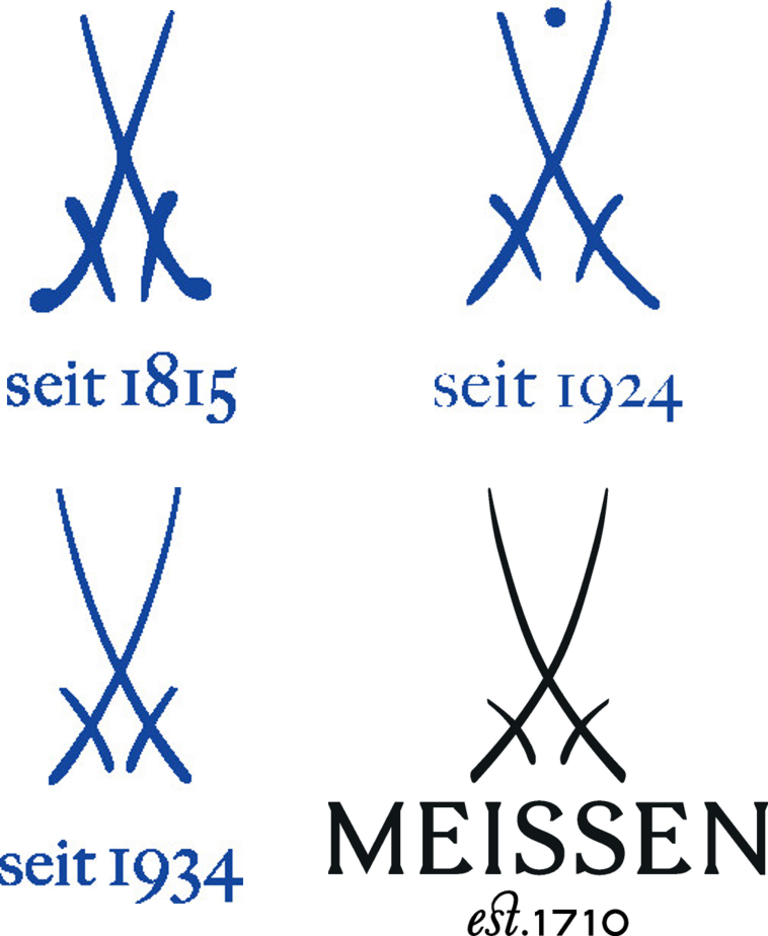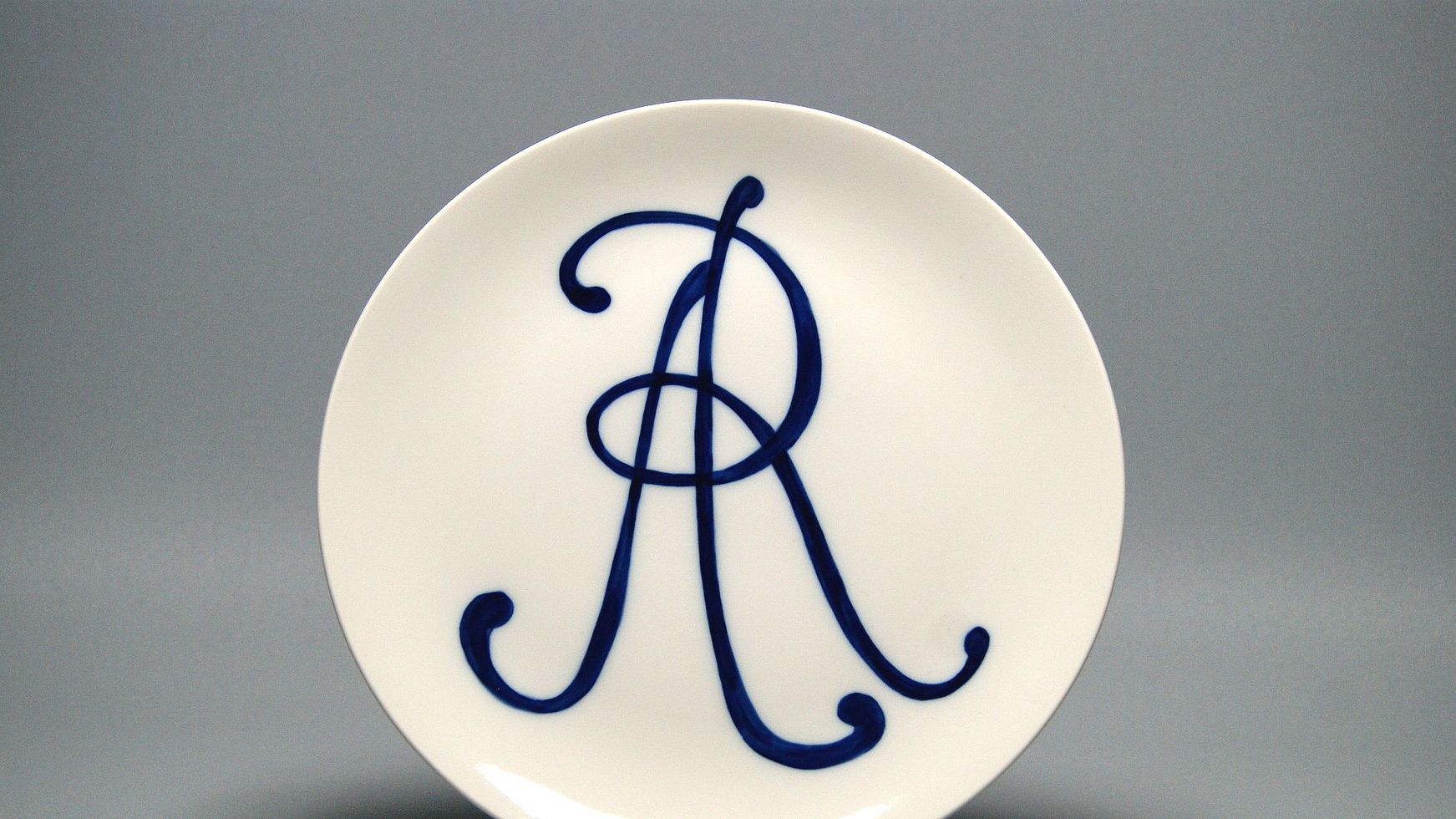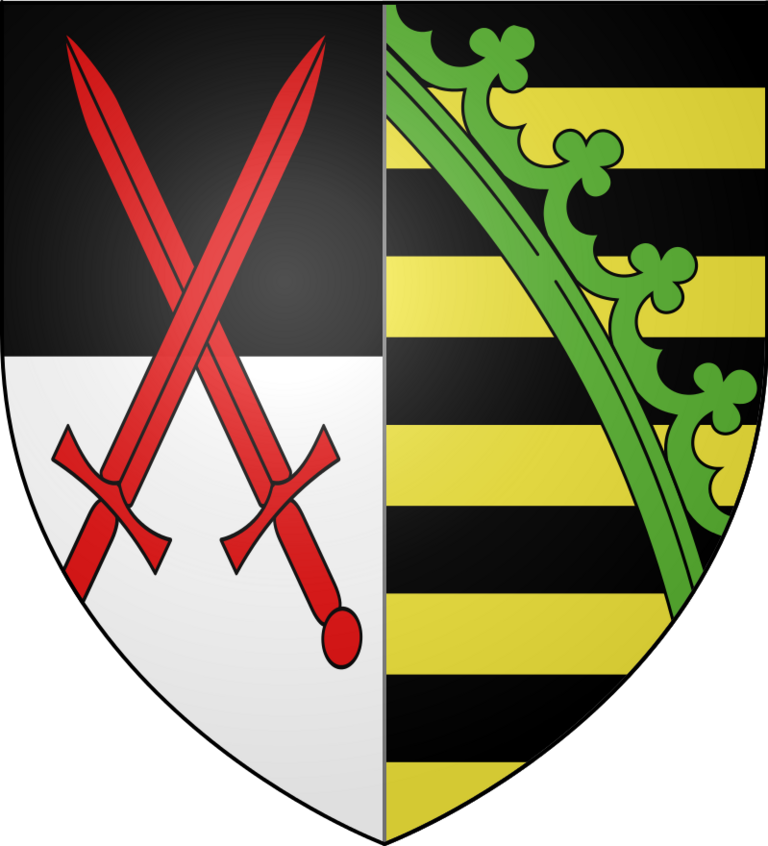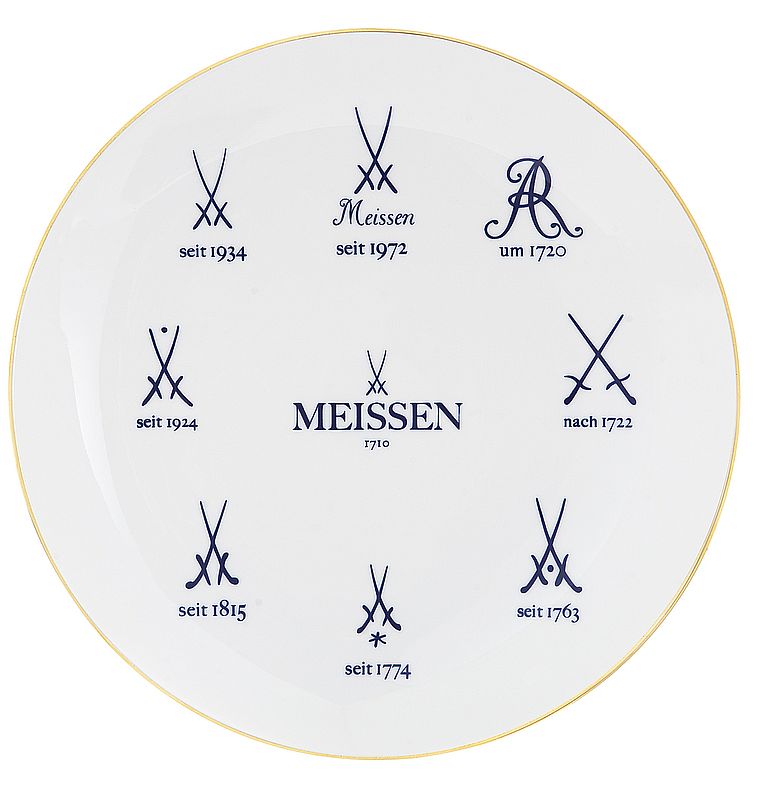Blue Swords
The world-famous Crossed Swords are the trademark of the Meissen State Porcelain Manufactory. After the arcanist (person with knowledge of one or more of the secrets of making porcelain) Samuel Stöltzel had fled to Vienna and divulged all he knew, Europe’s second porcelain factory was set up there. Initially, everything from Meissen was copied. The Manufactory’s then inspector, Johann Melchior Steinbrück, responded in November 1722 by proposing that the crossed swords from the Electoral Saxon arms be used as a means of identifying authentic Meissen porcelains. The Crossed Swords have been applied by hand in underglaze cobalt blue to Meissen porcelain until today.
AR - Augustus Rex
This marking on Meissen porcelains refers either to Augustus the Strong or his son Augustus III but is more of an ownership than a factory mark, since only porcelains for these two monarchs were identified by this means.
KPM - Königliche Porzellanmanufaktur (“Royal Porcelain Manufactory”) (1723-1725)
When used in conjunction with the crossed swords, the KPM mark is a visual reference to Augustus the Strong’s twin status as Saxon Elector and King in Poland.
1723-1763
The Manufactory had acquired perfect mastery of the ceramic material that is porcelain by this time. Initial difficulties encountered in preparing the paste, formulating fusible porcelain paints and precisely controlling the firing temperature had been resolved.
1763-1774
One or more dots between, next to or on the swords were already being added in the 1740s. One dot between the hilts on the swords was relatively common from about 1763 to 1774.

1774-1815
In a letter dated 4 January 1775, the Manufactory Director Count Marcolini ordained that the “wares manufactured” under his “Directorship ... from now on be marked with a little star, and that this be done directly beneath the Electoral Swords.” Thus, what came to be known as the “Marcolini mark” was introduced at Meissen within months of the Count being appointed the Manufactory’s “Chief Director” on 20th August 1774.
1815-1924
Swords drawn as steep curves, without any additional markings and intersecting high up, the pommels more pronounced than hitherto, were Meissen’s trademark from around 1815 to 1924.
1924-1934
The “Pfeiffer mark” was introduced in 1924 under Director General Max Adolf Pfeiffer. It contained inward-curving swords with no pommels and an additional dot between the tips at the top. The individuality that had previously characterised marks was lost with this cipher. The swords were now exact and uniform, at most differing in terms of size and no longer in the method of their execution.

From 1934
The swords were now drawn without any additional markings. They intersected roughly in the middle, and the guards ran almost parallel to the opposite blade.
1945-1947
Manufactory products were accorded a small arc between but not touching the swords’ hilts during this brief period. This was dubbed the “Neuhaus arc” after the then Director of the Porcelain Manufactory, Herbert Neuhaus. Herbert Neuhaus had been active as a porcelain painter at Meissen since 1921 and was appointed Director on 15 May 1945.
From 1972
The crossed blue swords were combined with the now binding manner of writing “Meissen” as of 1972. This is a form of spelling that, for the purposes of rendering the city’s name more readily intelligible internationally, differs from the way it is normally rendered, i.e. “Meißen”, where the letter “ß” actually stands for a double “s” but would be mistaken for a “B” in other languages.


